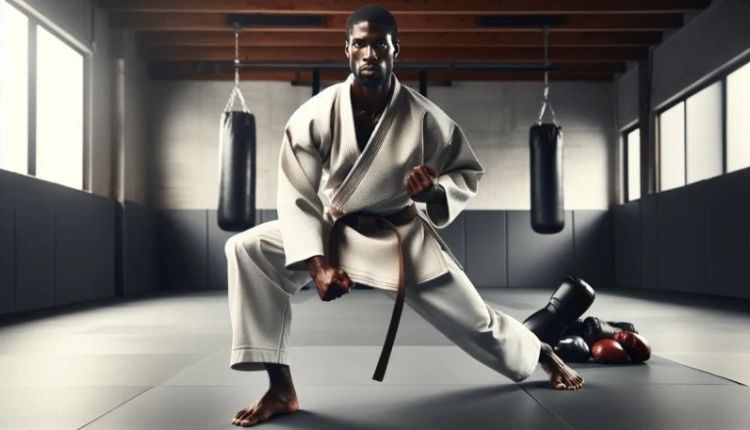This refers to the traditional training uniform worn by practitioners of various martial arts such as Judo, Karate, Brazilian Jiu-Jitsu and Aikido. The Gi Kit not only represents the commitment of the practitioner but also provides the comfort and flexibility necessary for rigorous training. Understanding the meaning, components and care of a Kit can help martial artists maintain their professionalism and tradition while training or competing.
Origin and meaning of Gi Kit
Gi Kit has its roots in Japan, where martial arts such as judo and karate were born. The term “Gi” comes from the Japanese word “Keikogi”, which means “training clothes”. It was originally designed by Jigoro Kano, the founder of judo, to replace traditional samurai clothing with something more practical for training. The uniform quickly spread across other martial arts disciplines and became a symbol of unity and respect.
Over time, the Kit became more than just a training outfit – it became a representation of humility and equality among practitioners. Regardless of rank or social status, everyone wears the same type of uniform, reminding martial artists that growth and discipline can be gained through hard work, not appearance or hierarchy.
Gi set components
A typical Gi Kit consists of three main components: jacket, pants and belt. Each part serves a specific purpose and contributes to the overall functionality of the uniform.
The jacket, known as “Uwagi”, is usually made of heavy cotton to withstand grabbing and pulling during a match. The pants, or “Zubon”, are designed to allow unrestricted movement while providing resistance when kneeling, kicking or anchoring. A belt called “Obi” indicates the practitioner’s rank and experience level, ranging from white for beginners to black for advanced martial artists.
Different martial arts may vary in Gi design. For example, judo Gis are stronger to withstand intense grounding, while karate Gis are lighter and allow for faster movements. Brazilian Jiu-Jitsu Gis are often tighter to prevent the opponent from easily grabbing excess fabric.
Gi Kit’s role in martial arts culture
The Gi Kit plays a vital role beyond its physical purpose. It embodies the cultural and philosophical principles that martial arts strive to teach. Wearing a Gi instills discipline, as students are required to maintain its cleanliness and proper presentation. A well-maintained Gi reflects respect for the dojo, the instructor and other practitioners.
Additionally, putting on a Gi before training can serve as a mental transition from everyday life to martial arts practice. Symbolising readiness, focus and humility, it reminds practitioners that every training session is an opportunity for self-improvement.
Choosing the right Kit
Choosing the right Gi Kit depends on several factors, such as martial art style, body size, material preference and training frequency. A standard cotton Gi is often recommended for beginners due to its comfort and affordability. Advanced practitioners may prefer specialized Gis made of ripstop fabric or pearl weave for increased durability and breathability.
Fit is another crucial aspect. A Gi that is too loose can hinder performance, while a Gi that is too tight can restrict movement. That’s why it’s important to find a balance that allows flexibility as well as the right coverage. Many brands now offer pre-shrunk options or size charts based on height and weight to help doctors find the ideal fit.
Caring for your Kit
Proper care extends the life of your Gi Kit and maintains its appearance. Washing the Gi after each use will prevent odours and bacteria build-up that are common in a sweaty training environment. Using cold water and a mild detergent helps preserve the fabric’s colour and structure. It is advisable to air-dry the Gi instead of using a dryer to prevent shrinkage and damage.
In addition, ironing the Gi before training increases its neatness and reflects a sense of discipline. Storing it in a clean, dry place will also ensure it stays fresh and ready for the next session. Regular care of the Kit not only promotes hygiene but also shows respect for one’s martial art.
Kit in competitive martial arts
In professional competitions, the Gi Kit plays a significant role in maintaining fairness and standardisation. Organisations such as the International Judo Federation (IJF) and the International Brazilian Jiu-Jitsu Federation (IBJJF) have strict rules regarding Gi size, colour and condition. Competitors are required to wear approved Gis to ensure that no competitor gains an unfair advantage through material or design.
Referees often check Gis before matches to confirm compliance. If a competitor’s Gi does not pass inspection, they may be disqualified or asked to change it. Therefore, an understanding of the competition standards is essential for serious athletes who wish to participate in official tournaments.
A modern adaptation of the Kit
With the global spread of martial arts, the Gi Kit has evolved to meet modern needs. Today, manufacturers use innovative materials that are lighter, more durable, and quick-drying. Some modern Gis include reinforced stitching and a mesh lining for better comfort during long workouts.
In addition to performance improvements, aesthetic customisation has also become popular. Many practitioners customise their Gis with patches, embroidery, or logos representing their dojo or team. While maintaining traditional values, these modern designs allow individuals to express their identity within the martial arts community.
The symbolism behind the colors and stripes
Each colour in the Gi Kit and belt system has a symbolic meaning. Traditional Gis are white and represent purity, humility and a willingness to learn. Black Gis, although less common, are often used by instructors or advanced practitioners as a sign of mastery and control. Coloured bands indicate progression and dedication over time.
The belt system motivates students to further train and improve. Each earned stripe or new colour means not only skill development but also personal growth in patience, perseverance and respect – core values deeply rooted in martial arts philosophy.
The psychological impact of wearing a Kit
Wearing a Gi Kit can have a strong psychological effect on the practitioner. It promotes a sense of belonging and self-confidence while strengthening the mindset of discipline and focus. The act of tying the belt and bowing before exercising serves as a ritual that prepares the mind for physical and mental challenges.
This psychological preparedness often translates into better performance, concentration and resilience in training and competition. The uniform essentially becomes an extension of the practitioner.
This psychological readiness often translates to better performance, concentration, and resilience in both practice and competition. The uniform essentially becomes an extension of the practitioner’s spirit, embodying their journey toward mastery.
The Bottom Lines
The Kit is far more than a simple training outfit—it is a symbol of martial arts philosophy, tradition, and respect. From its origins in Japan to its modern adaptations, the Gi continues to embody discipline, humility, and unity among practitioners around the world. Whether used in training or competition, the Gi Kit reminds every martial artist of the importance of perseverance. respect, and the pursuit of excellence. Taking care of it, wearing it with pride, and understanding its significance are integral parts of a true martial artist’s journey.
FAQs
What is a Kit used for?
A Kit is the traditional uniform worn by martial artists during training and competitions. It provides comfort and flexibility and symbolises discipline and equality.
Can I use the same Gi for different martial arts?
While some Gis can be used across multiple disciplines, each martial art has its preferred design and fabric type. It is best to choose a Gi specific to your training style.
How often should I wash my Kit?
You should wash your Kit after every training session to maintain hygiene and prevent odours.
What does the colour of the belt represent?
The colour of the belt represents a practitioner’s rank and experience level, starting from white for beginners to black for experts.
Can I customise my Kit with patches or logos?
Yes, many practitioners add patches or logos to personalise their Gis. However, for official competitions, make sure they meet the event’s regulations.





